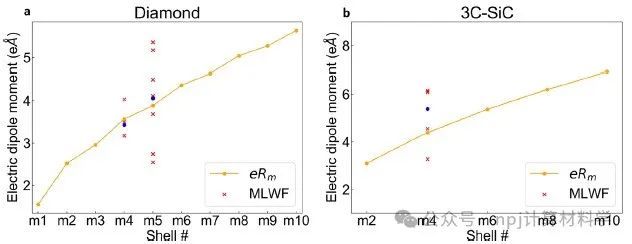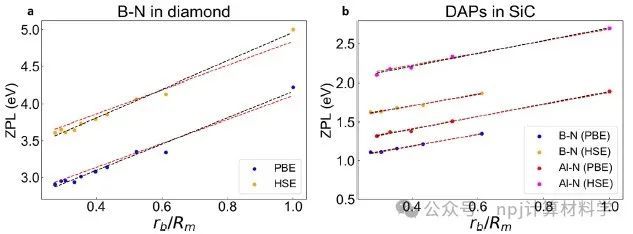寻找一个容易被制造、处理和操控的量子架构,一直是学术界、工业界和国防领域的焦点。实现这样的架构将使我们能够工程化量子技术。金刚石和碳化硅(SiC)已经被证明是工程量子通信、量子网络和量子存储设备的合适平台。在硅、SiC、金刚石和其他半导体化合物中,电离供体和受体之间的转变已经被理论模拟并在实验中观察到。尽管供体-受体对(DAP)系统已经被广泛研究了几十年,但它们在量子信息科学中的应用却是在近年来才开始被考虑的。

Fig. 1 Donor-acceptor pair interactions and electronic structure.
来自美国芝加哥大学普利兹克分子工程学院的Giulia Galli 教授团队,提出了一种利用宽禁带半导体中DAP之间静态偶极-偶极耦合的量子科学平台,以实现固态中的光可控、长距相互作用。

Fig. 2 Electric dipole moments of donor-acceptor pairs.
他们特别关注了SiC和金刚石。首先,为了评估DAPs是否能在固态中促进长程量子相互作用,作者研究了DAPs的电子结构,特别是它们在宿主材料带隙中相应的电子态。他们分析了几个供体和受体上的电荷跃迁能级,并计算了它们的结合能。其次,通过确定特定DAPs的零声子线和光致发光光谱,他们评估了是否可以在实验上分辨出距离越来越远DAPs的零声子线。
 <
<








 研究人员提出了一种基于DAPs的量子科学平台,通过宽禁带半导体如SiC和金刚石中的电偶极相互作用,实现对固态缺陷的光学操控长程相互作用。计算结果显示,Al-N对在SiC中尤为适合这种应用,有望推动量子技术的发展。
研究人员提出了一种基于DAPs的量子科学平台,通过宽禁带半导体如SiC和金刚石中的电偶极相互作用,实现对固态缺陷的光学操控长程相互作用。计算结果显示,Al-N对在SiC中尤为适合这种应用,有望推动量子技术的发展。
 最低0.47元/天 解锁文章
最低0.47元/天 解锁文章


















 被折叠的 条评论
为什么被折叠?
被折叠的 条评论
为什么被折叠?








